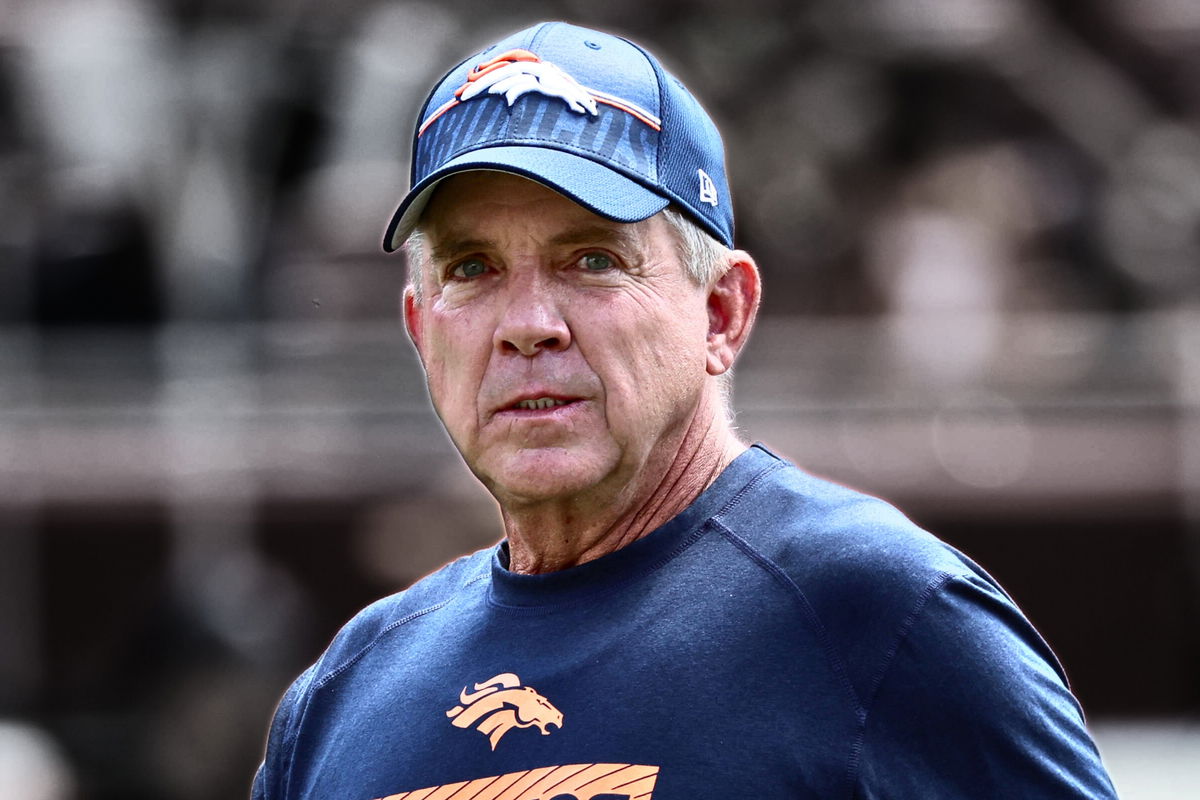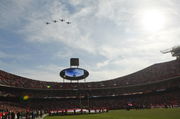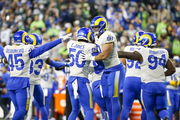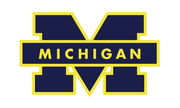

Back in January, a study from The Denver Post painted a layered portrait of what a Broncos exit from Empower Field would mean for Sun Valley. The tone wasn’t alarmist, but sobering. It was a reminder that decades of neighborhood identity, woven through the turnstiles, tailgate lots, and bars like The Original Brooklyn’s, hang in the balance if the team bolts from the place it’s called home since 1960. “If they leave, this is going to be the biggest empty hunk of land in the central part of Denver that’s undeveloped,” longtime business owner Dave Keefe said then, pointing from his bar toward the stadium’s sea of blacktop.
Watch What’s Trending Now!
But the questions raised weren’t just about football—they were about a neighborhood that has long lived in the stadium’s shadow and is only now beginning to find its footing again. Sun Valley, boxed in by highways and rail lines, has been undergoing a slow but intentional transformation. From a $30 million federal grant in 2016 to fresh developments replacing obsolete housing, the progress has been measured, yes—but real.
The looming unknown, though, is this: What happens if 76,000 screaming fans stop showing up on Sundays? But how could they, with Sean Payton making them believe again? And now, with a BusinessDen investigation uncovering a telling trend, that mystery has deepened— or maybe just begun to resolve.
ADVERTISEMENT
SCOOP: The Broncos have begun buying land near Burnham Yard, a state-owned former railyard in central Denver considered a possible new stadium site, a source tells @Business_Den
We found 10 transactions totaling $150M linked to one attorney pic.twitter.com/ATzISyMQvv
— Thomas Gounley (@tgounley) June 11, 2025
The Broncos, through a network of LLCs and private transactions, have quietly spent $150 million buying up property surrounding Burnham Yard, a 58-acre, state-owned railyard about a mile southeast of Empower Field that is currently up for sale. The Denver Post later confirmed the transactions, noting that at least 13 parcels were purchased since August 2024. While the team won’t confirm anything publicly, the land grabs send a pretty strong message. The Walton-Penner ownership group isn’t just exploring options. They’re setting the table, and doing so with intent.
Public records show multiple parcels acquired between August 2024 and spring 2025. At least nine of the LLCs involved were formed in 2023, and none of the sales were tied to loans, suggesting a flush and deliberate strategy. One attorney, Lea Ann Fowler, who previously worked with Broncos general counsel Tim Aragon at Hogan Lovells, handled at least nine of these deals. A source informed BusinessDen that at least 10 purchasing entities have direct ties to the Broncos’ ownership group. Among the LLCs used were Villard LLC, Compass Peak Holdings LLC, Summitt 55 Company LLC, and 1396 Canyon Lane LLC.
ADVERTISEMENT
Recent transactions suggest aggressive valuations. One property at 657 North Osage St.—a 9,361-square-foot warehouse—sold for $2.7 million, which the owner described as an above-market price. “Never met them; never knew a thing about it,” seller Tim Armitage told The Denver Post. “They had the money, and I was selling it.” But why Burnham Yard? Well, it checks a lot of boxes.
Its central location, proximity to light rail, nearby hospitals, and the potential to develop an entertainment district all make it a prime target, much like what’s unfolding near Ball Arena or the Santa Fe Yards site. “In terms of the vein of keeping it in urban Denver or close to downtown… I would put a bet that’s where it happens,” CBRE’s Chris Phenecie said. That bet seems safer by the day.
ADVERTISEMENT
Still, Burnham Yard isn’t a turnkey site. The railyard alone is too small for a stadium and the entertainment infrastructure the Broncos likely envision. That explains the flurry of surrounding purchases. Experts like RCLCO’s Erin Talkington note that for a multi-billion-dollar venue, the cost of land is negligible. “It’s one of the reasons why you often see new venues go to areas… in need of reinvestment,” she said. “When you’re talking about a $2 billion venue, land cost does become a drop in the bucket unless you’re really acquiring a prime site,” Talkington added.
Recent land sales in the area have averaged around $300 per square foot—nearly double the $155 per square foot seen in other parts of central Denver. The total purchase price for 13 parcels has reached nearly $153 million.
The Colorado Department of Transportation (CDOT), which owns Burnham Yard, aims to complete the sale by spring 2026. “The (CTIO) is still conducting due diligence on the most beneficial uses and site preparation to eventually sell the property,” CDOT’s Matt Inzeo said.
ADVERTISEMENT
Denver Water’s 36-acre campus to the west and SRM Concrete to the north are among the largest adjacent parcels that haven’t yet been sold, but could be key to any larger redevelopment plan. Still, none of this means Empower Field is coming down tomorrow.
The team’s lease with the Metropolitan Football Stadium District runs through 2030, with an option to extend through 2040, giving the Broncos time and leverage. But as team president Damani Leech said earlier this spring, the Broncos are already building out “calendars to get a better understanding of how long it takes” for permitting, approvals, and construction.
Stadium projects in the NFL typically take about four years from announcement to ribbon-cutting. “We’re starting to build out those calendars to get a better understanding of, once you do decide what to do, how long it’s going to take,” Leech said. “There’s a healthy amount of pressure,” he added, but clarified that no final timeline has been set.
ADVERTISEMENT
Once a site is finalized, ownership groups often use stadiums as anchors for larger entertainment districts—an increasingly common model across the Interstate 25 corridor. “Most of the deals that we’ve worked on, incoming owners, their primary question is around venue and the potential upside around the surrounding area,” Edwin Draughan of Park Lane, a sports-focused investment bank, has told The Denver Post in 2024. “… There’s only so much additional revenue you can get from the team. But there’s a layer of influence and there’s also a level of just real estate ownership.”
What was once speculation has now taken the shape of $150 million in real estate. The Broncos aren’t just exploring. They’re laying groundwork. They’re building. Much like how Sean Payton is building his roster for the postseason.
ADVERTISEMENT
The Orange Crush believes in Sean Payton!
Sure, the Broncos are already making headlines for potentially packing up and leaving Empower Field. But the noise inside the locker room is a different kind of loud, full of belief. This one’s about the dudes in the huddle, led by Sean Payton and a second-year QB who’s now out of the training wheels phase. “It’s a lot different,” Payton said about Bo Nix. “Just the processing… the throws are where you want the ball to go.”
Now, if you’re wondering what changed, the answer isn’t flashy. Its structure. The Broncos return all five starters on the offensive line. So, no new cadences to learn. No funky protections to install. And Payton? Still calling plays. That continuity has Bo Nix sounding like a guy who’s actually enjoying this whole thing. “Just spitting out play calls is a lot easier… it’s fun to be in the know,” Nix said.
Top Stories
Patrick Mahomes’ Chiefs Extremely Close to Leaving Arrowhead Amid Kansas State’s Announcement, Per Report

Seahawks’ Ernest Jones IV Accuses Rams of Inappropriate Comments After Puka Nacua’s Feud With Nick Emmanwori

Josh Allen Makes Lifetime Buffalo Announcement as Pregnant Hailee Steinfeld Receives Bills QB’s Clear Family Plan

Browns Coach Addresses Interest From Michigan After Losing Out on Popular College Football Job

Seahawks Star Awaits Punishment After Controversial Incident Involving Matthew Stafford’s Offense

However, he’s not doing it alone. Denver added new weapons like rookie back RJ Harvey and tight end Evan Engram, who brings two Pro Bowls worth of production to the mix. Nix, a known team-first guy since his Oregon days, reached out to every rookie after the draft. Just to welcome them. Just because that’s who he is. It’s little things like that which tend to snowball once the games start to count.
ADVERTISEMENT
So, here we are. Denver opens at home against the Titans on September 7. They’ll do it with the second-best odds to win the AFC West, above the Chargers and behind the usual suspects in Kansas City. That’s a nod to what Payton’s building. Quietly, methodically.
Now, the question: can Bo Nix avoid the sophomore slump? If his rookie campaign was any indication—3,775 yards, 29 touchdowns, and a playoff run—the foundation’s sturdy. What comes next depends on how high this group can climb together. But one thing’s clear: The Orange Crush isn’t just back. It believes.
ADVERTISEMENT
ADVERTISEMENT
ADVERTISEMENT

